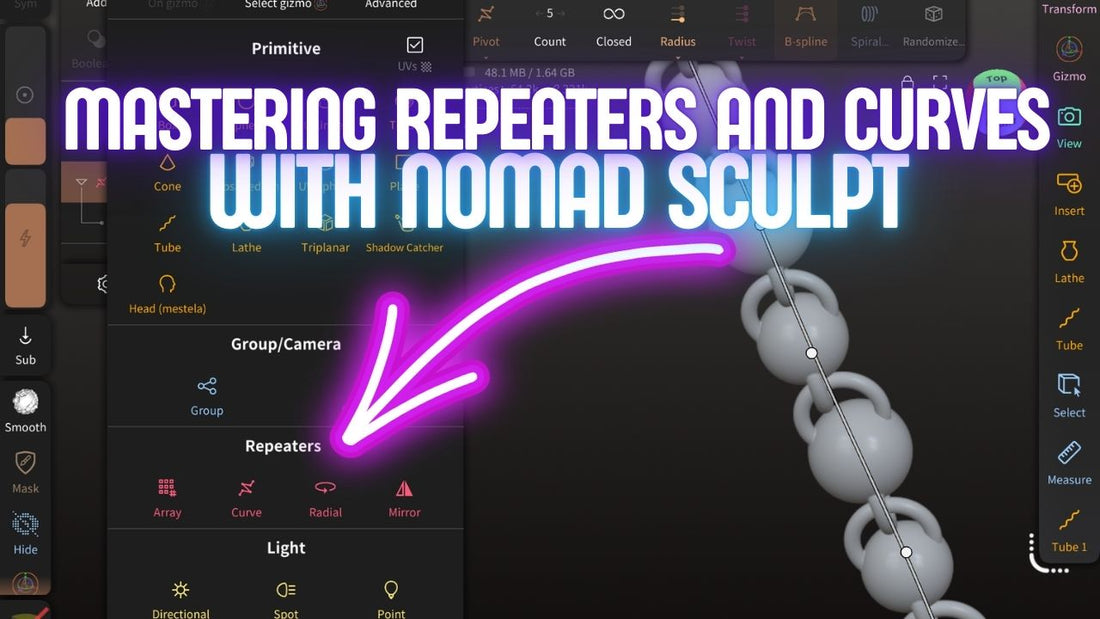Chains are one of the most versatile details you can add to your 3D models. They bring personality, realism, and even functionality to your projects. Whether you’re designing sleek jewelry, giving your miniature a gritty upgrade, or adding mobility to a flexi, chains make your designs stand out.
In this article, I’ll walk you through how to create chains in Nomad Sculpt and show you three totally different use cases:
-
Stylish jewelry
-
Miniatures and tabletop accessories
-
Flexis and functional prints
Grab your stylus, fire up Nomad Sculpt, and let’s dive in.
Step 1: Building the Basic Chain Link
-
Open Nomad Sculpt and delete the default sphere.
-
Add a torus.
-
Modify the torus to the shape of a chain link.
-
Duplicate it, rotate it 90 degrees, and align it.
-
Run a voxel remesh and merge them together.
Now you’ve got the base chain link. This simple shape is the foundation for every chain you’ll make.
Step 2: Using Repeaters and Curves
Here’s where the magic happens. Add a repeater with a curve. This duplicates your chain links and lets you stretch them into a longer chain. By adjusting the count and pivot points, you can make necklaces, bracelets, or any chain length you need.
Use Case #1: Jewelry
Want to design a necklace or bracelet? Start with your base chain link, repeat it with a curve, and shape it into your desired form. From chunky chains to delicate loops, this method works for all types of 3D-printed jewelry.
Use Case #2: Miniatures
Miniatures thrive on details, and nothing says “battle-ready goblin” like a chain.
For this example, I added a torus, shaped it into a link, and attached it as an earring on a goblin head model. You can take it further:
-
Link the earring to a nose ring for a wild 1990s vibe.
-
Use the chain as part of a weapon, like a Morningstar.
Again, just voxel remesh, add a repeater, and curve the chain where you want i
Use Case #3: Flexis
Chains can also be used in flexi prints.
Here’s the process I used:
-
Create chain links.
-
Add two spheres as joints.
-
Merge everything with a voxel remesh.
-
Add a repeater with a curve to form your flexible chain.
Pro tip: for a true flexi design, run one chain link into the center of each sphere instead of connecting pairs. That gives you better movement. I’ll cover that in a future tutorial.
Why Chains Work So Well
Chains are simple, but they open a huge range of creative possibilities in 3D design. With just a torus, some modifiers, and the repeater tool, you can make everything from fashion pieces to tabletop gear to functional flexis.
That’s how you create chains in Nomad Sculpt—fast, simple, and adaptable. The key is mastering repeaters and curves. Once you’ve got that trick down, you’ll be able to drop chains into just about any project.

